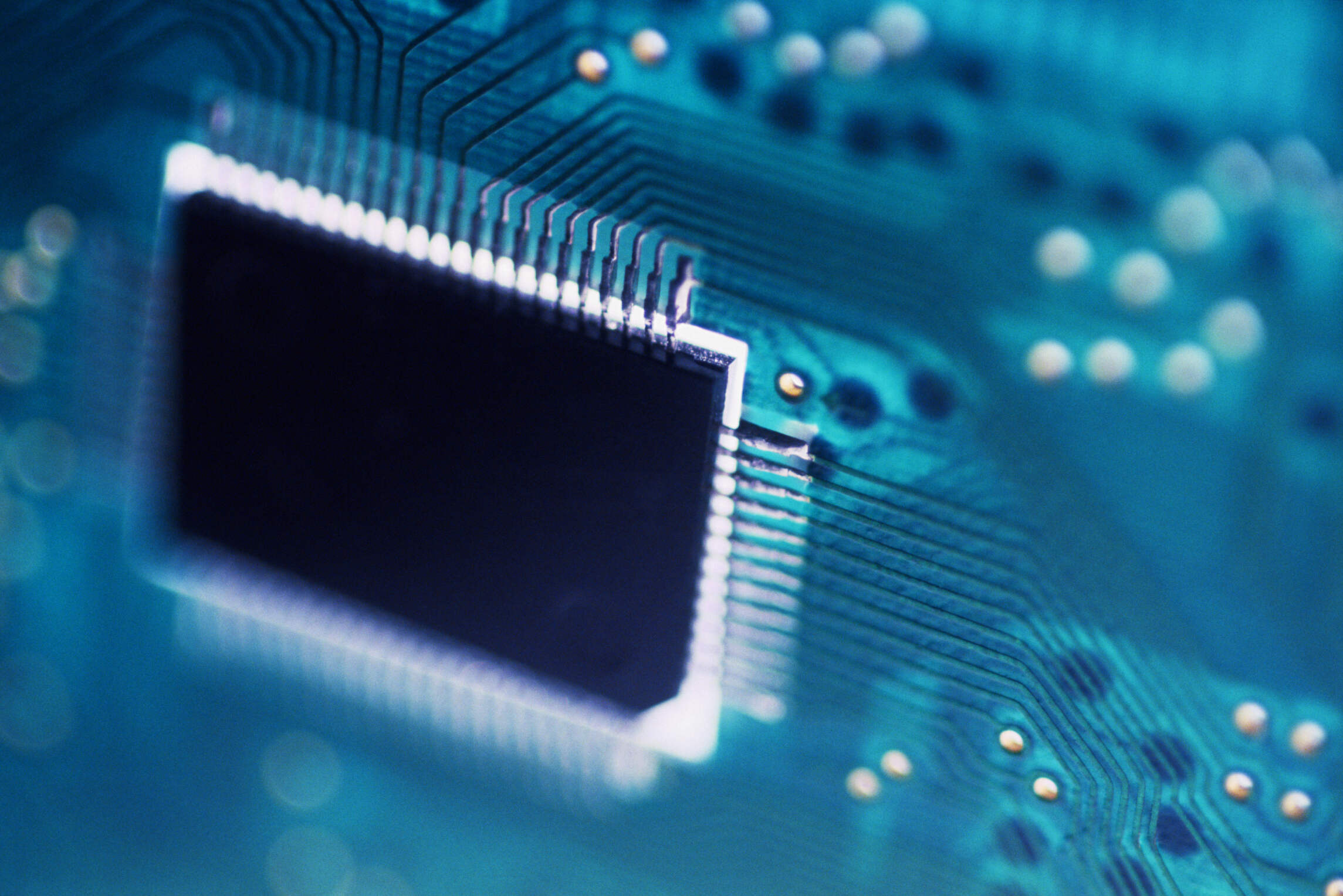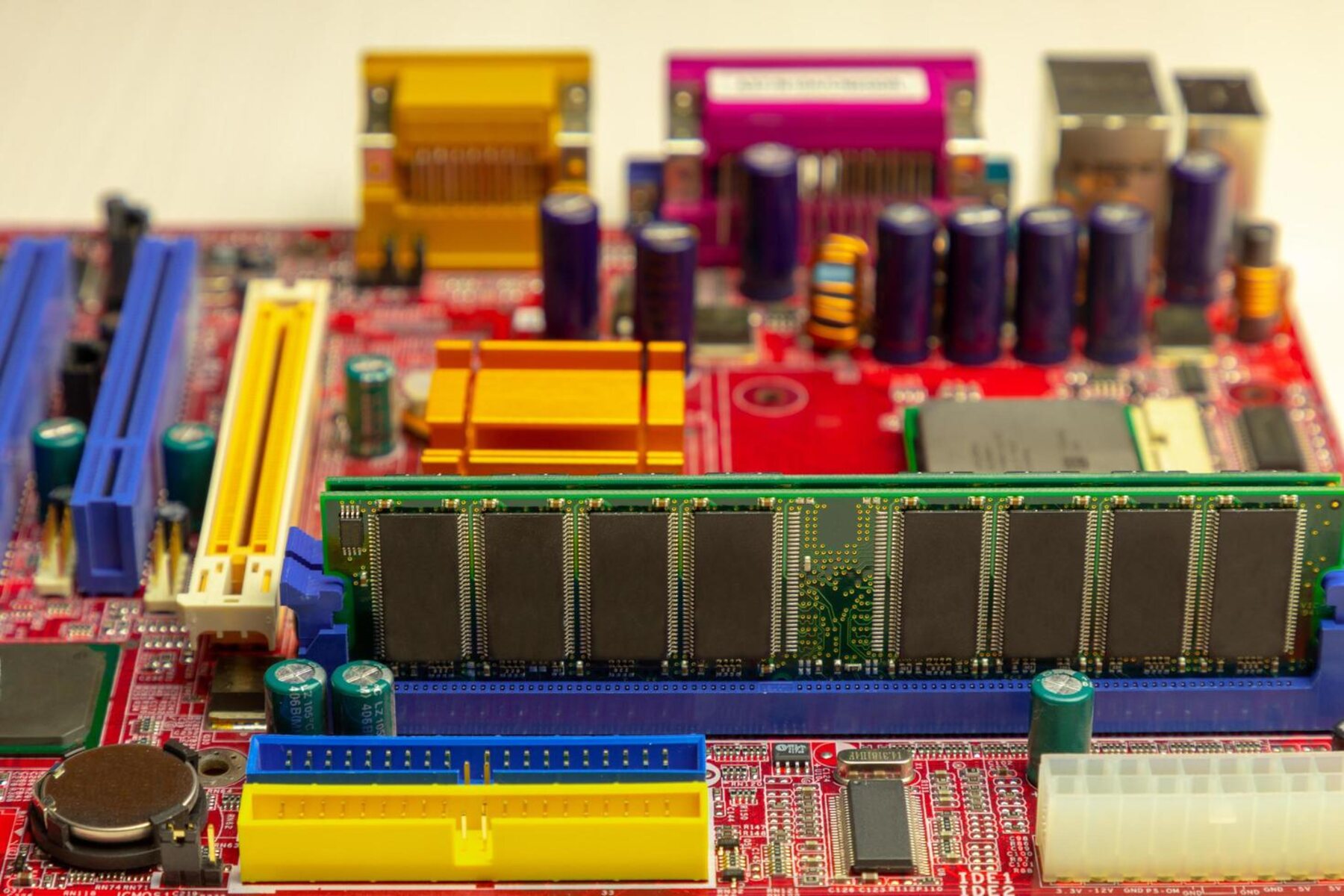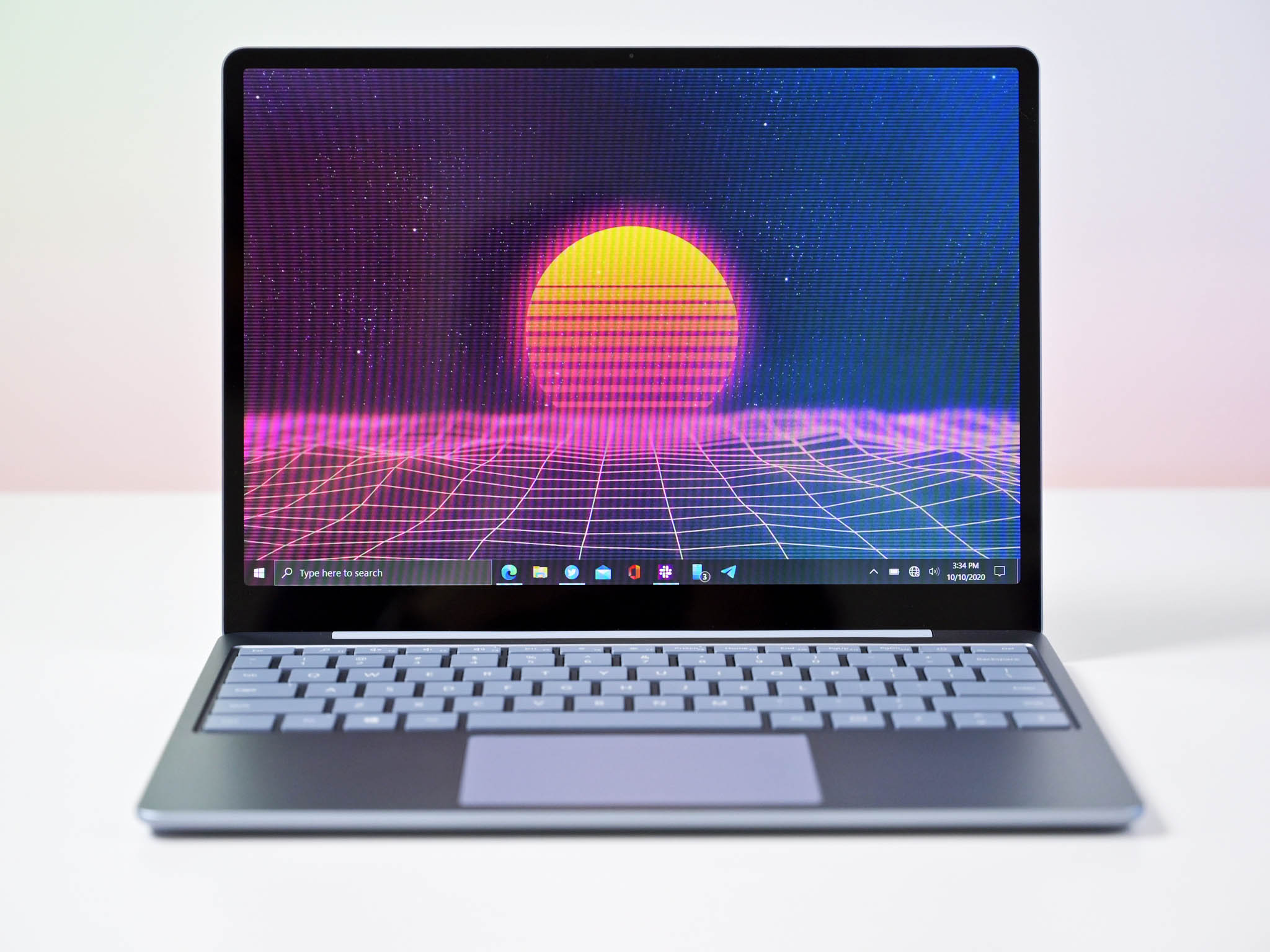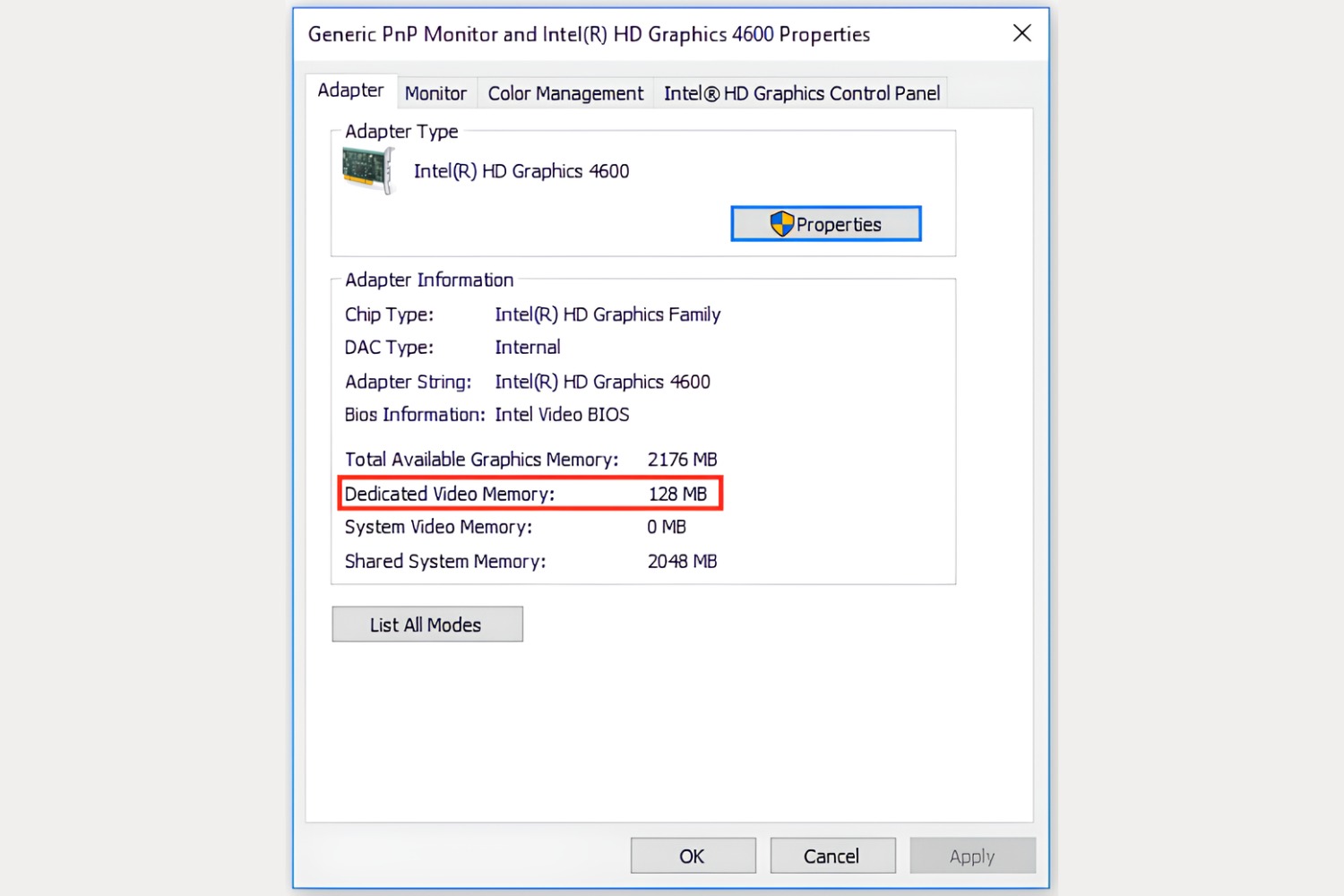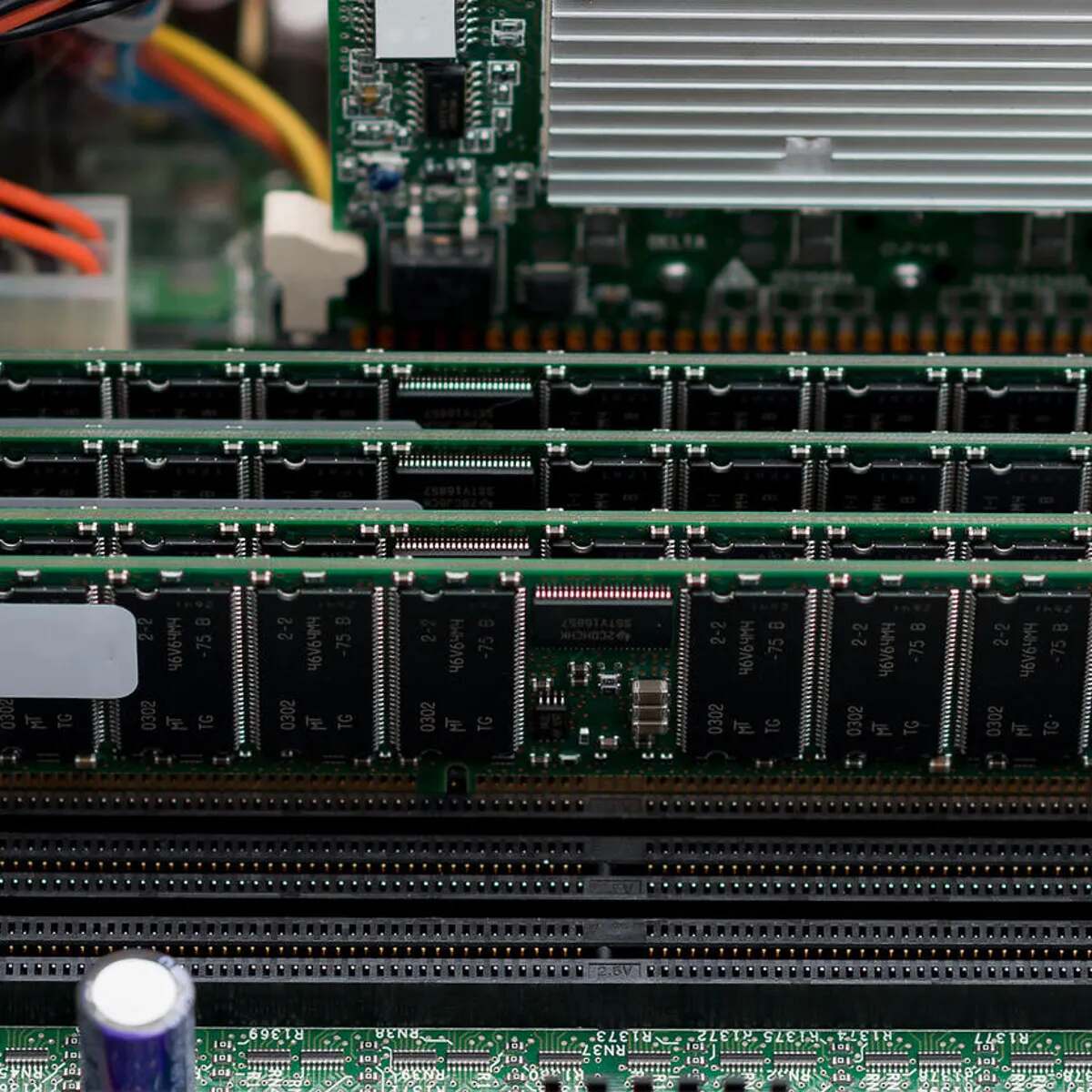Introduction
Experiencing high memory or RAM usage can be a frustrating issue that slows down your computer, affecting its performance and causing programs to freeze or crash. In Windows 10, memory usage can spike for various reasons, such as resource-intensive applications, background processes, or compatibility issues with drivers. To optimize your computer’s performance and address this problem, you need to understand the causes of high memory/RAM usage and learn how to fix it effectively.
When you use your computer, the operating system allocates memory (RAM) to various programs and processes to ensure smooth multitasking. However, excessive memory usage occurs when a program or process consumes more memory than necessary, leading to a strain on the system’s resources. This can result in a sluggish and unresponsive computer, impacting your productivity and user experience.
High memory usage can stem from a multitude of factors. For instance, resource-intensive programs like video editing software, virtual machines, or video games can consume a significant amount of RAM. Additionally, background processes, such as system updates, antivirus scans, or application updates, can contribute to high memory usage. In some cases, outdated or incompatible device drivers may also be the culprit behind the excessive memory consumption.
Checking memory or RAM usage in Windows 10 is fairly straightforward. You can use the built-in Task Manager to monitor the memory usage of different processes and identify the ones that are consuming excessive memory. Simply right-click on the taskbar and select “Task Manager.” In the Task Manager window, go to the “Processes” or “Details” tab and look for the “Memory” column. Here, you can see the memory usage of each running process.
To address high memory/RAM usage in Windows 10, several effective solutions can help optimize your system’s performance and reduce memory consumption. In the following sections, we will explore ten methods that you can employ to fix this issue and get your computer running smoothly again.
What is high memory/RAM usage?
In simple terms, high memory or RAM (Random Access Memory) usage refers to the situation where an excessive amount of memory is being utilized by the programs and processes running on your computer. RAM is a vital component of your system’s hardware that stores data temporarily while your computer is in use. It allows for faster access to frequently used information, resulting in smoother performance and multitasking capabilities.
When your computer runs multiple programs simultaneously or performs memory-intensive tasks, such as gaming or video editing, the RAM is allocated accordingly to ensure these programs can function optimally. However, if a program or process consumes more memory than necessary, it can result in high memory usage and lead to performance issues.
High memory usage can manifest in different ways, including slower system performance, unresponsive programs, constant freezing or crashing, and a noticeable lag in executing commands. This can severely impact your productivity and overall user experience, making it important to address the issue promptly.
It’s worth noting that high memory usage is not always a cause for concern. Some resource-intensive programs, like video editing software or virtual machines, naturally require a larger allocation of RAM to function smoothly. However, if you notice consistently high memory usage without any particular demanding applications running, it is advisable to investigate further.
Identifying the specific programs or processes responsible for high memory usage can be done using the Task Manager in Windows 10. This built-in utility allows you to view the memory consumption of each active process, enabling you to pinpoint any potential culprits. By analyzing the memory usage, you can determine whether certain programs need to be optimized, updated, or even closed to alleviate the strain on your system’s resources.
With a solid understanding of what high memory/RAM usage entails, it’s time to explore effective strategies to tackle this issue and restore your computer’s performance. In the following sections, we will explore various methods that can help you reduce memory usage and improve overall system responsiveness.
Why does high memory/RAM usage occur?
High memory or RAM (Random Access Memory) usage can occur due to various factors, and understanding the reasons behind it can help you effectively address the issue. Here are some common causes of high memory usage:
- Resource-intensive programs: Certain applications are designed to utilize a significant amount of RAM to deliver optimal performance. Video editing software, virtual machines, and complex games are examples of resource-intensive programs that require a large memory allocation. When running these programs, it is normal to experience higher memory usage.
- Background processes: Windows 10 runs numerous background processes to maintain system stability, conduct system updates, and perform other tasks. These processes can consume a considerable amount of memory, resulting in high memory usage. The Windows Update service, antivirus scans, and system maintenance tasks are examples of background processes that can contribute to increased memory usage.
- Outdated or incompatible device drivers: Device drivers act as a bridge between your computer’s hardware and the operating system. When drivers become outdated or incompatible, they can lead to memory leaks or excessive memory consumption. Keeping your drivers updated can help resolve compatibility issues and optimize memory usage.
- Memory leaks: Memory leaks occur when programs do not release memory that they have allocated but are no longer using. Over time, memory leaks can result in gradual memory usage increase, eventually leading to high memory consumption.
- Large number of open programs: Running multiple programs simultaneously can put a strain on your system’s resources, including RAM. Each program that is active consumes a portion of memory, and if the total memory usage exceeds the available capacity, it can result in high memory usage.
- Malware or viruses: Malicious software or viruses can cause abnormal behavior in your computer system, including high memory usage. Some malware may allocate a significant amount of memory to perform malicious activities or to disguise their presence, leading to excessive memory consumption.
By identifying the underlying cause of high memory usage on your system, you can implement the appropriate solutions to resolve the issue. In the next section, we will explore methods to check memory/RAM usage in Windows 10 and diagnose the programs or processes responsible for the elevated memory usage.
Checking memory/RAM usage in Windows 10
Before diving into the solutions to address high memory/RAM usage in Windows 10, it’s crucial to know how to check memory usage on your system. Windows 10 provides a built-in tool called Task Manager that allows you to monitor the memory consumption of running processes. Here’s how you can check memory/RAM usage:
- Right-click on the taskbar at the bottom of your screen and select “Task Manager” from the context menu.
- In the Task Manager window, you will see several tabs such as “Processes,” “Performance,” “App History,” and more. For checking memory/RAM usage, click on the “Processes” tab.
- By default, the Task Manager shows a simplified view of processes. To see the precise memory usage of each process, click on “More details” at the bottom left corner of the Task Manager window.
- Once you’re in the detailed view, click on the “Memory” column to sort the processes by memory usage. The processes with the highest memory consumption will be displayed at the top.
- The “Memory” column provides information about the memory usage of each process in kilobytes (KB) or megabytes (MB). You can monitor which programs or processes are using the most memory and identify any potential culprits contributing to high memory usage.
Additionally, the Task Manager provides a graphical representation of memory usage in the “Performance” tab. Here, you can observe the overall memory utilization trend. If you notice that the memory usage is consistently high, it’s an indication that there might be an ongoing issue that needs to be addressed.
By regularly monitoring your system’s memory/RAM usage, you can stay informed about any abnormal spikes or sustained high usage. This information will be instrumental in identifying the programs or processes that may be causing excessive memory consumption. With a clear understanding of memory/RAM usage, let’s move on to the solutions to fix high memory/RAM usage in Windows 10.
How to fix high memory/RAM usage in Windows 10
Experiencing high memory or RAM usage can significantly impact your computer’s performance. Fortunately, there are several effective methods to fix this issue and optimize memory usage in Windows 10. Here, we’ll explore ten solutions that you can try:
- Close unnecessary programs and background processes: Start by closing any programs or processes that are not currently in use. This will free up memory resources and help reduce memory usage.
- Disable startup programs: Disable unnecessary programs from launching at startup. To do this, open Task Manager and go to the “Startup” tab. Right-click on the programs you want to disable and select “Disable.”
- Update device drivers: Outdated or incompatible device drivers can contribute to high memory usage. Visit the manufacturer’s website or use a driver update tool to ensure your drivers are up to date.
- Perform a virus scan: Malware or viruses can cause abnormal memory usage. Run a full system scan using a reliable antivirus software to detect and remove any malicious programs.
- Adjust virtual memory settings: Adjusting the virtual memory settings can help alleviate high memory usage. Go to the “System Properties” in the Control Panel, click on the “Advanced” tab, and under the “Performance” section, click on “Settings.” In the “Performance Options” window, go to the “Advanced” tab and click on “Change” under the “Virtual memory” section. Here, you can customize the virtual memory settings.
- Disable SuperFetch and Windows Search services: SuperFetch and Windows Search services can contribute to high memory usage. Disable these services by typing “services.msc” in the Windows search bar, finding the respective services, right-clicking on them, and selecting “Properties.” Set the startup type to “Disabled” for both services.
- Adjust visual settings for performance: Windows 10 offers various visual effects that can consume memory. Adjusting these settings can help reduce memory usage. Right-click on “This PC” or “My Computer,” select “Properties,” click on “Advanced System Settings,” go to the “Advanced” tab, and under the “Performance” section, click on “Settings.” Select the “Adjust for best performance” option or customize the effects according to your preference.
- Uninstall unnecessary software and bloatware: Remove any unnecessary software or bloatware that you no longer use. Open the Control Panel, go to “Programs” or “Programs and Features,” and uninstall the unwanted applications.
- Run a System File Checker scan: The System File Checker tool can repair corrupt system files that may cause high memory usage. Open Command Prompt as an administrator and type “sfc /scannow.” Let the scan complete and restart your computer.
- Perform a clean boot: A clean boot can help identify if a third-party program is causing high memory usage. To perform a clean boot, press “Windows + R,” type “msconfig,” go to the “Services” tab, check the “Hide all Microsoft services” box, and click “Disable all.” Then go to the “Startup” tab and click “Open Task Manager.” Disable all startup programs and restart your computer.
Implementing these solutions can help reduce memory usage and improve the performance of your Windows 10 system. Try them one by one until you find the solution that works best for you. By optimizing your memory usage, you can enjoy a smoother computing experience without the annoying slowdowns caused by high memory/RAM usage.
Close unnecessary programs and background processes
One of the simplest and most effective ways to reduce high memory/RAM usage in Windows 10 is to close any unnecessary programs and background processes that are running on your system. When you have multiple programs running simultaneously, they consume a significant amount of memory, which can lead to higher memory usage and slower system performance.
To close unnecessary programs, start by identifying which applications are currently running on your computer. You can do this by checking the taskbar and system tray for open program icons. Simply right-click on the program’s icon and choose “Close,” or use the “X” button to close the program’s window.
In addition to closing visible programs, it’s important to check for background processes that may be running without your knowledge. These processes can consume memory even if you don’t actively use the associated program. To check and close background processes:
- Right-click on the taskbar and select “Task Manager” from the context menu. Alternatively, you can press “Ctrl + Shift + Esc” to open the Task Manager directly.
- In the Task Manager window, navigate to the “Processes” or “Details” tab, depending on your Windows version.
- Sort the processes by memory usage by clicking on the “Memory” column heading. This will help you identify which processes are consuming the most memory.
- Take a close look at the list of processes and identify any programs that you don’t need at the moment or that are using an excessive amount of memory.
- To close a process, right-click on it and select “End Task” or “End Process.”
Make sure to exercise caution when closing processes in Task Manager, as some may be essential for the system’s normal operation. Avoid terminating processes that are listed as critical system processes, such as “Explorer.exe” or “Wininit.exe.”
By closing unnecessary programs and background processes, you free up memory resources and reduce memory usage, resulting in improved system performance. Regularly performing this step can help prevent memory bloat and maintain optimal memory/RAM usage.
Disable startup programs
When you start your computer, certain programs and applications may automatically launch in the background, consuming valuable memory resources. Disabling these startup programs can help reduce high memory/RAM usage and improve your system’s performance.
To disable startup programs in Windows 10, follow these steps:
- Press “Ctrl + Shift + Esc” to open the Task Manager.
- In the Task Manager window, go to the “Startup” tab. Here, you will see a list of programs that are set to launch at startup.
- Identify the programs that you no longer need to start automatically. These could include applications that you rarely use or programs that are not essential for system functionality.
- Right-click on the program’s name and select “Disable.” This will prevent the program from launching during startup.
- Repeat the above steps for any other programs that you want to disable from the startup list.
It’s important to note that not all programs listed in the startup tab are unnecessary. System-related programs or apps that you frequently use should ideally remain enabled. Use your judgment to determine which programs can be safely disabled without affecting your regular workflow.
Disabling startup programs offers several benefits. Firstly, it reduces the memory footprint of your system, as fewer programs are actively running in the background. This, in turn, leads to lower memory/RAM usage and improved overall performance.
Additionally, disabling startup programs can positively impact the startup time of your computer. With fewer programs launching at startup, the boot process becomes faster and smoother.
If you’re unsure about a particular program in the startup list, it’s worth looking up online to determine its purpose and importance. Some programs may be necessary for specific hardware components or drivers, while others may be potential bloatware that can be safely disabled.
By carefully managing your startup programs, you can optimize memory usage and ensure that only essential applications are running in the background, resulting in a more efficient and responsive Windows 10 system.
Update device drivers
Outdated or incompatible device drivers can contribute to high memory/RAM usage in Windows 10. When drivers are not up to date, they may malfunction or cause memory leaks, resulting in increased memory consumption. Updating your device drivers can help resolve compatibility issues and optimize memory usage.
There are several methods to update device drivers:
- Windows Update: Windows Update automatically checks for and installs the latest drivers for your hardware. To run Windows Update, go to “Settings” > “Update & Security” > “Windows Update” and click on “Check for updates.” If any driver updates are available, they will be installed automatically.
- Manufacturer’s website: Visit the website of your hardware manufacturer, such as the graphics card or motherboard manufacturer, and search for the latest drivers for your specific device model. Download the drivers and follow the manufacturer’s instructions to install them.
- Device Manager: The Device Manager in Windows 10 allows you to manually update device drivers. Right-click on the “Start” button and select “Device Manager.” Expand the categories to locate the device whose driver you want to update. Right-click on the device, select “Update driver,” and choose the method you prefer: search automatically for updated driver software or browse your computer for driver software.
- Driver update tools: There are third-party driver update tools available that can automatically scan for outdated drivers and download the latest versions. These tools simplify the driver update process and ensure that you have the most up-to-date drivers installed.
Updating your device drivers not only helps to resolve potential compatibility issues and improve system stability but can also optimize memory usage. By keeping your drivers up to date, you ensure that they are functioning properly and not causing excessive memory consumption or memory leaks.
Remember to focus on essential drivers such as those for your graphics card, network adapter, and chipset. Non-essential drivers, such as those for peripherals or additional features, can typically be updated when necessary or as prompted by the manufacturer’s update notifications.
Regularly checking for driver updates and keeping your drivers current is an important maintenance step that can significantly contribute to reducing high memory/RAM usage and improving overall system performance in Windows 10.
Perform a virus scan
Malware or viruses can be a major cause of high memory/RAM usage in Windows 10. These malicious programs can consume a significant amount of memory for their own operations or disguise their presence in the system. Conducting a thorough virus scan can help detect and remove any malware that may be causing abnormal memory usage.
Here’s how you can perform a virus scan on your Windows 10 system:
- Windows Security: Windows 10 comes with built-in antivirus protection called Windows Security. To perform a scan using Windows Security, open the “Start” menu, type “Windows Security,” and open the app. Go to the “Virus & threat protection” tab and click on “Quick scan” or “Full scan” to initiate the scan. Follow the on-screen instructions to complete the scan.
- Third-party antivirus software: If you have a third-party antivirus software installed, open the software and look for the option to run a full system scan. The steps and terminology may vary depending on the antivirus program you are using. Consult the documentation or support resources provided by the antivirus software manufacturer for specific instructions.
- Online virus scanners: In addition to local antivirus software, there are also online virus scanners available. These scanners allow you to upload specific files or scan your entire system online for malware. Popular online virus scanners include Norton Security Scan, Trend Micro HouseCall, and ESET Online Scanner among others.
Performing a virus scan helps identify and remove any malware that could be causing high memory/RAM usage. During the scan, the antivirus software searches for known threats, performs behavioral analysis to detect suspicious patterns, and eliminates any infected files or processes.
If the scan detects any malware, follow the recommended actions provided by the antivirus software to quarantine or remove the malicious files.
Remember to keep your antivirus software up to date to ensure it has the latest virus definitions and can effectively detect and neutralize new threats. Regularly scanning your system for viruses is a fundamental step in maintaining a secure and optimized Windows 10 environment with optimal memory usage.
Adjust virtual memory settings
Virtual memory, also known as the paging file, is a feature in Windows 10 that helps manage memory usage by using a portion of your hard drive as additional memory when the physical RAM is running low. Adjusting the virtual memory settings can help alleviate high memory/RAM usage and improve system performance.
Follow these steps to adjust the virtual memory settings in Windows 10:
- Open the “Control Panel” by searching for it in the Windows search bar.
- In the Control Panel, select “System and Security,” then “System.”
- Click on the “Advanced system settings” option.
- In the “System Properties” window, go to the “Advanced” tab.
- Under the “Performance” section, click on the “Settings” button.
- In the “Performance Options” window, go to the “Advanced” tab.
- Under the “Virtual memory” section, click on the “Change” button.
- Uncheck the box that says “Automatically manage paging file size for all drives.”
- Select the drive that contains your paging file, usually the system drive (typically “C:”).
- Check the option for “Custom size.”
- Set the initial size (MB) and maximum size (MB) based on your system’s specifications or the recommended values provided by Windows. Generally, it is best to set both values to the same number.
- Click “Set” and then “OK” to save the changes.
- Restart your computer for the changes to take effect.
Adjusting the virtual memory settings allows you to allocate specific amounts of space on your hard drive for use as virtual memory. By increasing the virtual memory size, you provide more room for the system to store data when the physical RAM is maxed out, reducing the likelihood of high memory usage and excessive RAM pressure.
Keep in mind that setting the virtual memory size too low may cause performance issues, while setting it too high can waste valuable hard drive space. It’s advisable to consult the recommended size for your system or use the automatic allocation option if you prefer to let Windows manage the virtual memory settings.
By fine-tuning the virtual memory settings, you can optimize memory/RAM usage and enhance overall system performance in Windows 10.
Disable SuperFetch and Windows Search services
SuperFetch and Windows Search services are two background services in Windows 10 that can contribute to high memory/RAM usage. Disabling or adjusting these services can help reduce memory usage and improve system performance.
To disable SuperFetch and Windows Search services, follow these steps:
- Open the Run dialog by pressing the “Windows + R” keys simultaneously.
- Type “services.msc” in the Run dialog and hit Enter. This will open the Services window.
- In the Services window, locate the “SuperFetch” service. Right-click on it and select “Properties”.
- In the SuperFetch Properties window, under the “General” tab, set the “Startup type” to “Disabled”. Click “OK” to save the changes.
- Locate the “Windows Search” service in the Services window. Right-click on it and select “Properties”.
- In the Windows Search Properties window, under the “General” tab, set the “Startup type” to “Disabled”. Click “OK” to save the changes.
Disabling SuperFetch and Windows Search services can reduce memory usage because these services prefetch data and index files to improve overall system performance. However, in some cases, they can consume significant amounts of memory, especially if you have a large number of files or a slower system.
Disabling these services won’t affect your ability to use your computer or access your files. You can still manually search for files and the system will continue to function smoothly. Disabling SuperFetch and Windows Search services simply prevents the automatic prefetching and indexing processes from running in the background.
Keep in mind that if you frequently use the search function in the Start menu or require fast program loading times, disabling these services may have a minor impact on those areas. However, the potential reduction in memory usage and improved system performance may outweigh any minor inconvenience.
By disabling SuperFetch and Windows Search services, you can reclaim memory resources and optimize memory/RAM usage in Windows 10, leading to a more responsive and efficient computing experience.
Adjust visual settings for performance
Windows 10 offers various visual effects and animations that can consume memory resources and contribute to high memory/RAM usage. Adjusting the visual settings for performance can help reduce memory usage and improve system responsiveness.
Follow these steps to adjust the visual settings in Windows 10:
- Right-click on “This PC” or “My Computer” and select “Properties.”
- In the System window, click on “Advanced system settings” located on the left-hand side.
- In the System Properties window, go to the “Advanced” tab and click on the “Settings” button under the “Performance” section.
- In the Performance Options window, select the “Adjust for best performance” option or manually customize the visual effects according to your preference.
- If customizing the settings, deselect the visual effects that you can live without. Examples include animations, shadows, and transparent windows.
- Click “Apply” and then “OK” to save the changes.
By adjusting the visual settings for performance, you can reduce the strain on your system’s resources, including memory/RAM. This allows your computer to allocate more memory to essential tasks and applications, leading to improved overall performance.
While disabling or reducing visual effects may impact the aesthetic appeal of Windows 10, the trade-off is increased memory availability and faster system responsiveness. The impact on visual appearance will vary depending on the settings you choose. Experiment with the settings to strike the right balance between performance and visual aesthetics.
By optimizing visual settings for performance, you can reduce high memory/RAM usage, improve system efficiency, and create a smoother computing experience on your Windows 10 system.
Uninstall unnecessary software and bloatware
Having unnecessary software and bloatware installed on your Windows 10 system not only occupies valuable storage space but also consumes system resources, including memory/RAM. Uninstalling these programs can help reduce high memory usage and improve overall system performance.
Follow these steps to uninstall unnecessary software and bloatware:
- Open the “Control Panel” by searching for it in the Windows search bar.
- In the Control Panel, select “Programs” or “Programs and Features.”
- In the list of installed programs, identify the software and bloatware that you want to uninstall.
- Click on the software or bloatware name, and then click on the “Uninstall” button at the top of the window.
- Follow the on-screen instructions to complete the uninstallation process.
- Repeat the above steps for any other unnecessary software or bloatware that you want to remove.
When choosing which software to uninstall, consider removing programs that you no longer use or those that came pre-installed on your system and are not essential for your workflow. Bloatware, in particular, refers to software that comes pre-installed on a new computer and typically includes trial versions of third-party applications or utilities that you might not need.
It’s important to exercise caution when uninstalling software and bloatware. Avoid uninstalling programs that you are not familiar with or unsure of their purpose, as they may be necessary for the proper functioning of your system or specific hardware components.
By uninstalling unnecessary software and bloatware, you can free up storage space and reduce memory usage, allowing your system’s resources to be utilized more efficiently. This can result in improved overall system performance and faster response times.
Regularly reviewing and removing unnecessary software and bloatware is a good maintenance practice to keep your Windows 10 system optimized and running smoothly with optimal memory/RAM usage.
Run a System File Checker scan
Corrupt or missing system files can lead to various issues on your Windows 10 system, including high memory/RAM usage. Running a System File Checker (SFC) scan can help identify and repair any corrupted system files, potentially resolving the memory-related problems you are experiencing.
Follow these steps to run an SFC scan:
- Open the Command Prompt with administrative privileges. To do this, right-click on the Start button and select “Command Prompt (Admin)” or “Windows PowerShell (Admin).”
- In the Command Prompt window, type the following command and press Enter:
sfc /scannow - The SFC scan will now begin. The process may take some time as it scans and repairs the system files on your computer.
- Once the scan is complete, you will see a message indicating whether any corrupted files were found and repaired.
- Restart your computer to apply any changes made by the SFC scan.
The System File Checker scans your system for corrupted or missing files and attempts to repair them using cached copies in the Windows component store or by retrieving the files from the installation media.
Running an SFC scan can help resolve high memory/RAM usage caused by corrupted system files. By repairing these files, you ensure they are functioning correctly, which can lead to improved system stability and performance.
If the SFC scan detects any corrupted files that it cannot repair automatically, you may need to consider other troubleshooting steps or seek further assistance from Microsoft support or technical forums for advanced solutions.
Note that running an SFC scan requires administrative privileges, as it makes system-level changes. Therefore, ensure that you open the Command Prompt or PowerShell as an administrator to perform the scan.
Regularly running an SFC scan as part of your system maintenance routine can help keep your Windows 10 system in good health, preventing issues related to high memory usage and ensuring proper functionality.
Perform a clean boot
Performing a clean boot can help identify if a third-party program or service is causing high memory/RAM usage on your Windows 10 system. By starting your computer with only essential services and processes, you can isolate the cause of the issue and take appropriate action to resolve it.
Here’s how you can perform a clean boot:
- Press “Windows + R” to open the Run dialog.
- Type “msconfig” in the Run dialog and hit Enter. This will open the System Configuration window.
- In the System Configuration window, go to the “Services” tab.
- Check the box that says “Hide all Microsoft services.” This ensures that only non-Microsoft services are displayed.
- Click on the “Disable all” button to disable all non-Microsoft services.
- Go to the “Startup” tab and click on “Open Task Manager.”
- In the Task Manager window, go to the “Startup” tab.
- Disable all startup programs by right-clicking on each program and selecting “Disable.”
- Close Task Manager and go back to the System Configuration window.
- Click on “OK” and restart your computer.
After performing a clean boot, your computer will start with minimal services and no unnecessary startup programs. This allows you to determine if any third-party software or service was causing the high memory/RAM usage.
Observe the system’s memory usage and performance after the clean boot. If the memory usage is significantly reduced or returns to normal, it indicates that a third-party program or service was responsible for the issue.
To identify the culprit, you can gradually enable services and startup programs one by one, restarting your computer each time, and monitoring the memory usage. Eventually, you will be able to pinpoint the specific program or service causing the problem.
Once you have identified the problematic program or service, you have several options to address the issue. You can try updating the software, reinstalling it, or seeking support from the software’s manufacturer or community forums.
A clean boot is a useful troubleshooting step to resolve high memory/RAM usage caused by conflicting third-party software or services. By isolating the source of the problem, you can take targeted actions to resolve the issue and restore optimal memory usage on your Windows 10 system.
Conclusion
High memory/RAM usage in Windows 10 can significantly impact your computer’s performance and productivity. However, by implementing the solutions outlined in this article, you can effectively address this issue and optimize memory usage.
Here’s a quick summary of the solutions discussed:
- Close unnecessary programs and background processes to free up memory resources.
- Disable startup programs to prevent unnecessary programs from launching at startup.
- Update device drivers to resolve compatibility issues and optimize memory usage.
- Perform a virus scan to detect and remove any malware that may be causing high memory usage.
- Adjust virtual memory settings to provide more memory to your system when needed.
- Disable SuperFetch and Windows Search services to reduce memory consumption.
- Adjust visual settings for performance to reduce strain on system resources.
- Uninstall unnecessary software and bloatware that are consuming memory resources.
- Run a System File Checker scan to repair any corrupted system files.
- Perform a clean boot to determine if a third-party program or service is causing high memory usage.
Remember, it is essential to maintain a healthy level of memory usage for optimal system performance. Regularly monitoring memory usage, keeping your system updated, and practicing good digital hygiene can help prevent future memory-related issues.
By implementing the solutions discussed and adopting good system maintenance practices, you can free up memory/RAM, improve system performance, and enjoy a smoother computing experience on your Windows 10 system.







